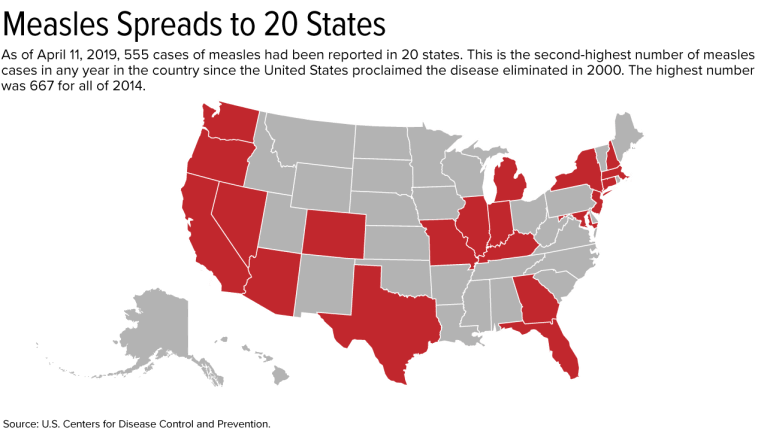Illnesses, Deaths Tied to Vaping
New reports are showing that the use of electronic cigarettes (vaping) is believed to be responsible for five deaths and 450 severe lung injuries. Continue reading this article from SHRM to learn more.
The use of electronic cigarettes, also known as vaping, is believed to be responsible for five deaths and 450 severe lung injuries in what appears to be a nationwide epidemic, according to new reports.
E-cigarettes are battery-operated and produce vapor that simulates smoking. They can resemble regular cigarettes, cigars, pipes, pens, USB sticks and other everyday items. They do not burn tobacco, but the device heats a liquid that usually contains nicotine, flavorings and other chemicals.
While most employers ban smoking in the workplace, their policies don't always extend to e-cigarette products. However, a Centers for Disease Control and Prevention (CDC) health alert on Aug. 30 warned that severe pulmonary disease is associated with using e-cigarette products. The agency, which is part of the U.S. Department of Health and Human Services, launched a multistate investigation into the lung illnesses on Aug. 1.
"Although more investigation is needed to determine the vaping agent or agents responsible," wrote Dr. David C. Christiani of the Harvard School of Medicine, "there is clearly an epidemic that begs for an urgent response." He shared his comments in the Sept. 6 issue of the New England Journal of Medicine, along with the preliminary report "Pulmonary Illness Related to E-Cigarette Use in Illinois and Wisconsin."
The CDC is working with the U.S. Food and Drug Administration, states and other public health partners and clinicians to determine what is sickening users, and in some cases resulting in fatalities. On Friday, it suggested that people refrain from using e-cigarette products during its investigation.
SHRM Online has collected the following articles about this topic from its archives and other trusted sources.
5 Deaths Linked to Vaping. Officials Are Urging Consumers to Stop. (Chicago Tribune)
How Are You Handling Vaping at Work? (SHRM Online)
More States Ban Vaping, E-Cigarette Use in Workplaces (Bloomberg)
Florida Adds Vaping to Regulated Indoor Smoking (SHRM Online)
SOURCE: Gurchiek, K. (6 September 2019) "Illnesses, Deaths Tied to Vaping" (Web Blog Post). Retrieved from https://www.shrm.org/hr-today/news/hr-news/Pages/Illnesses-Deaths-Tied-to-Vaping-.aspx
4 Tips for Managing Organizational Change
Only 26 percent of transformation initiatives succeed, according to a McKinsey study. One thing most successful transformation efforts have in common is that change is driven through empowerment, not mandated from the top. Continue reading this blog post from Harvard Business Review for four tips on managing organizational change.
Launching major transformation efforts is a common way that business leaders try to get a leg up on the competition, or just keep their heads above water. But too many of these efforts fail. Change is difficult, and many people not only resist it but seek to undermine it. Unsurprisingly, then, a McKinsey study found that merely 26% of transformation initiatives succeed. Most successful transformations have one thing in common: Change is driven through empowerment, not mandated from the top.
In my research of transformative political revolutions, social movements, and organizational change, successful efforts not only identify resistance from the start but also make plans to overcome those who oppose the transformation. And it’s done not with bribes, coercion, shaming, or cajoling, but by enabling others within their organizations to drive change themselves. Here’s how they do it.
Start with a small group. Typically, leaders launch transformation efforts with a large kickoff. It makes sense: They want to build momentum early by communicating objectives clearly. This can be effective if a ready consensus already exists around the initiative. Yet if the desired change is truly transformational, it is likely to encounter fierce opposition; inertia can be a powerful force, even more powerful than hope or fear. So by starting with a large communication campaign, essentially presenting the initiative as a fait accompli, you are very likely to harden the opposition of those who are skeptical of the change.
Most successful transformations begin with small groups that are loosely connected but united by a shared purpose. They’re made of people who are already enthusiastic about the initiative but are willing to test assumptions and, later, to recruit their peers. Leaders can give voice to that shared purpose and help those small groups connect, but the convincing has to be done on the ground. Unless people feel that they own the effort, it’s not likely to go very far. For example, when Wyeth Pharmaceuticals set out to drive a major transformation to adopt lean manufacturing practices, it began with just a few groups at a few factories. The effort soon spread to thousands of employees across more than a dozen sites and cut costs by 25%.
Identify a keystone change. Every change effort begins with some kind of grievance: Costs need to be cut, customers better served, or employees more engaged, for example. Wise managers transform that grievance into a “vision for tomorrow” that will not only address the grievance but also move the organization forward and create a better future. This vision, however, is rarely achievable all at once. Most significant problems have interconnected root causes, so trying to achieve an ambitious vision all at once is more likely to devolve into a five-year march to failure than it is to achieve results. That’s why it’s crucial to start with a keystone change, which represents a clear and tangible goal, involves multiple stakeholders, and paves the way for bigger changes down the road.
That gap between aspiration and practical reality was the challenge that Barry Libenson encountered when he arrived at Experian as CIO in 2015. In his conversations with customers, it became clear that what they most wanted from his company was access to real-time data. Yet to deliver that, he would have to move from the company’s traditional infrastructure to the cloud, an initiative that raised serious concerns about security and reliability. He began by developing methods for accessing real-time data for internal use, rather than going straight to customer-facing features. That required his team to engage many of the same stakeholders and develop many of the same processes that a full shift to the cloud would have required and allowed him to show some early results.
“Once we developed some internal APIs, people could see that there was vast potential, and we gained some momentum,” Libenson told me. Experian not only successfully moved to the cloud but also launched its Ascend platform based on the new infrastructure, which is now the fastest-growing part of its business.
Network the movement. All too often we associate any large-scale change with a single charismatic leader. The U.S. civil rights and Indian independence movements will always be associated with Martin Luther King Jr. and Mohandas Gandhi, respectively. In much the same way, turnarounds at major companies like IBM and Alcoa are credited to their CEOs at the time, Lou Gerstner and Paul O’Neill.
The truth is more complicated. King, for example, was just one of the “big six” of U.S. civil rights leaders. Gerstner gained allies by refocusing the company around customers. O’Neill won over labor unions by making a serious commitment to workplace safety. These examples show why, in his book Leaders: Myth and Reality, General Stanley McChrystal defines effective leadership as “a complex system of relationships between leaders and followers, in a particular context, that provides meaning to its members.”
Every large-scale change requires both leadership at the top and the widening and deepening of connections through wooing — not coercing — an ecosystem of stakeholders.
Consider the case of Talia Milgrom-Elcott, cofounder of 100Kin10. When she set out to start a movement to recruit and retain 100,000 STEM teachers in 10 years, she knew there was no shortage of capable groups working to improve education. In fact, she had worked with many people who were building myriad approaches to the issue. But they had never met one another. And so she created a platform for collaboration that brings together nearly 300 partner organizations through conferences, working groups, and networking. Today 100Kin10 is ahead of schedule to meet its goal.
Surviving victory. Often the most dangerous part of any transformation effort is when the initial goals have been met. That’s why successful transformation leaders focus not only on immediate goals but also on the process of change itself. If Wyeth had stopped at a 25% cost reduction, it would have soon found itself in trouble again. But because its employees embraced the lean manufacturing methods, the company was able to keep moving forward. In much the same way, if Experian had been satisfied with merely shifting to a new technology infrastructure, little would have been gained.
In some cases, the benefits of a successful transformation can last for decades. Remembering Gerstner’s IBM turnaround in the 1990s, one of his top lieutenants, Irving Wladawsky-Berger, told me, “Because the transformation was about values first and technology second, we were able to continue to embrace those values as the technology and marketplace continued to evolve.” After a near-death experience, the company remains profitable today.
SOURCE: Satell, G. (27 August 19)"4 Tips for Managing Organizational Change" (Web Blog Post). Retrieved from https://hbr.org/2019/08/4-tips-for-managing-organizational-change
Tracking Employee Life Cycle
The HR landscape is constantly changing. With each new generation that enters the workforce, expectations change. Read this blog post from SHRM to learn more about tracking the employee life cycle.
We who study Employee Engagement are consistently looking for trends in hiring and the direct effect on retention. The Human Resource landscape is slippery, no other profession is tasked with such a diverse cycle of management skills. The ability to find great talent, train, engage and promote are an unenviable set of tasks. Recruiters mirror salespeople, Total Rewards professionals have to have an acumen for numbers and the disparate technologies that represent the progression from hiring through promotion can make one's head spin.
So, we stare down the inevitable:
How do we create a synchronized strategy from recruitment to retirement.... ????
Let's start with the job market....
As a new generation of talent enter the workforce are expectations changing?
Are those escalated in age better equipped with irreplaceable experience?
Is a recession coming?
Do elite talents have any interest in job-hopping?
Those who are great at what they do are probably not interested in switching jobs and there are others who simply do not have the proper qualifications. So, staffing professionals are tasked with finding people who are qualified, able to engage and humble in their entry-level financial expectations.
Prospective employees have a few simple expectations:
- A product/service they believe in
- Leadership that is visionary yet receptive to change
- A culture of transparency
- A manager they enjoy serving
Sounds simple enough but the ability to pull together these traits under a common mission is difficult. Companies are often great at producing quality products but lacking in employee development. Again, our staffers are called upon to sell the good qualities of the company while side-stepping what isn't working.
Sustaining Engagement....
Getting them in the door is one thing. Delivering on promises is another.
Once employees are trained, they need to develop the confidence to acclimate to the culture. Our extended HR team has to sustain the attraction of the hiring process with technology that is accessible and intuitive. HR is then called upon to make sure there is a vessel for strong manager/employee communication while keeping leadership abreast of the action in the trenches.
Take inventory:
- Does training scale to specific functional traits while enhancing soft skills?
- Is your Human Capital Management technology integrated and engaging?
- If employees and managers aren't on the same page, how will you know?
- Does your CEO recognize general employee goals?
Train, Reward, Challenge and Eliminate Silos!
Seeing departures before they happen.....
If exit interviews are part of your engagement strategy, you are a step behind. The popular counter is to have HR integrate "stay interviews". If you need to administer a survey for employees to validate your existence, your workplace relationships might be fractured.
Managers should have an accountability plan for their employees that is more parts celebration of achievement than calling out deficiencies.
Recognize in public, discipline is private.
If in every day you leave people with a firm understanding of what is working and where they need development, there is no guesswork. People know when they haven't performed to their fullest potential, calling them out twice a year doesn't work.
Ask yourself: do our hiring enticements continue through our day-to-day engagement proposition?
We all just want to represent something we believe in among people we respect and an ever-evolving challenge cycle complete with rewards at every step of progression.
Originally published on Dave's Weekly Thought blog.
SOURCE: Kovacovich, D. (6 August 2019) "Tracking Employee Life Cycle" (Web Blog Post). Retrieved from https://blog.shrm.org/blog/tracking-employee-lifecycle
Was Your Company Trashed Online? What to Do with Workers’ Negative Reviews
A survey from Bayt.com revealed that 76 percent of professionals research a company online before considering a job there. Continue reading this post from SHRM to find out how your company should react to workers' negative reviews.
Online reviews proliferate for everything from rent shares to restaurants, and corporate cultures are hardly immune: Sites like Glassdoor, Indeed and Vault give disgruntled employees a platform to expose the underbelly of their organizations' managers and practices--whether fairly or not.
"Job candidates and employees are now empowered to provide instant feedback on employers, at any time, and they can rate a company's culture and management just as they rate a hotel, restaurant or movie," said Jeanne Meister, founding partner of Future Workplace, a New York City-based HR executive network and research firm.
And these reviews can potentially be seen by untold numbers of job candidates.
A survey from Bayt.com—a job board for positions in the Middle East—found that 76 percent of professionals research a company online before considering a job there. An Indeed survey shows that 83 percent of job seekers will probably rely on company reviews to decide if they should apply to a job.
If negative reviews threaten a business's brand, reputation and future hiring prospects, what's a company's recourse? And what if the review is accurate about a negative aspect of working for your company?
What If a Reviewer Lies?
Robin Richards, co-founder of CareerArc, an HR technology company based in Burbank, Calif., suggests two options if a company spots a fraudulent review:
1. Flag it. On its website, Glassdoor says that employers "can flag [a review] directly and our Content team will give it a second look. If we find that we missed something the first time, we'll take it down."
Typically, Glassdoor removes a post if it violates the company's guidelines or terms of use. For instance, if a poster:
- Misrepresents his or her current or former affiliation with an employer.
- Posts content that's defamatory, libelous or fraudulent; that the poster knows to be false or misleading; or that does not reflect the poster's honest opinion and experience.
- Discloses information that violates legally enforceable confidentiality; nondisclosure or other contractual restrictions; or rights of any third party, including any current or former employers or potential employers.
2. Respond to it. "This may be the most effective course of action," Richards said. "Simply being aware of negative comments is not enough. Today, [potential job] candidates expect a reply. Sixty-two percent say reading a response improved their perception of an employer, according to one Glassdoor survey."
The response should be prompt. To that end, companies should create alerts that notify them immediately when they're mentioned publicly in a post or on social media. Leaders should also ask workers to notify them, or HR, if they spot posts that could harm the company.
What If the Review Has Merit?
Responding too swiftly might not be the best course of action, however, if a review makes an allegation that has merit. If reviewers can provide evidence supporting a negative posting, an employer's defensiveness will only reflect poorly on the business.
"Make sure to not be combative and to consult with your legal team before responding to any serious claims, such as harassment or discrimination," Richards said.
Do show appreciation for the feedback.
"Listen to what the review has to say," Richards said. "The worst thing to do is ignore a bad review simply because it's negative. Keep an open mind and investigate if there are merits to the claims. They may represent real opportunities for change that could genuinely improve your company culture."
And if companies do make improvements, he said, share those actions on the site where the bad review appeared.
Finally, companies may want to ask current employees to respond to a critical review by posting positive reviews.
"Encourage employees to share why they love working at your company," Richards said.
But, Glassdoor warns, "we do not allow employers to incentivize or coerce employees to leave positive reviews."
If a review is especially nasty, or is starting to receive media attention, consider issuing a press statement to address and, if applicable, refute the issues that the post raised.
Legal Considerations
If a company isn't satisfied with how a review website responds to its complaints, it may want to pursue legal action, such as a cease-and-desist order.
But be aware that the courts have ruled that employees' complaining about their company to try to improve working conditions is protected speech. And posting personnel file details about a current or former worker could violate privacy.
Also, many websites allow reviewers to discuss companies' senior leaders by name, though not anyone below that level.
Glassdoor notes that the law protects such websites from responsibility for the content that users submit, and "If you sue our users and ask us to tell you who they are, we object and often fight in court to protect their anonymity."
Richards also recommends that employers:
- Analyze comments on employer rating sites to inform HR strategy.
- Listen carefully to current employees so you know what makes them happy and what doesn't.
- Assign a team to analyze and respond to positive and negative feedback on employee satisfaction surveys.
"In much the same way that marketing departments have become customer-centric, human resource departments must treat their employees as customers and continuously use listening platforms to better understand employees needs and wants," Meister said.
"This means ending the once-a-year employee survey and replacing it with continuous, monthly or weekly surveys. It means a relentless focus on transparency and responsiveness in the workplace. As more employees use an expanding set of these employer rating sites," she said, "power is shifting from the employer to the employee."
SOURCE: Wilkie, D. (13 June 2019) "Was Your Company Trashed Online? What to Do with Workers’ Negative Reviews" (Web Blog Post). Retrieved from: https://www.shrm.org/ResourcesAndTools/hr-topics/employee-relations/Pages/negative-workplace-reviews-.aspx
What HR can do about the measles — and what it can't
According to the Centers for Disease Control and Prevention (CDC), measles has been confirmed in 26 states since the beginning of 2019, affecting not only schools, medical facilities and public areas, but also the workplace. Continue reading to learn more.
After decades of near-eradication in the U.S., measles is making a comeback. Its return affects not only schools, medical facilities and public areas, but also the workplace.
As of May 24th, there were 535 confirmed cases of measles in Brooklyn and Queens since September, according to the New York City Department of Health and Mental Hygiene. On the other side of the country, the Los Angeles Times recently reported a confirmed case of measles linked to Google's Mountain View campus.
Measles has been confirmed in 26 states since the start of 2019, as of May 24, according to the Centers for Disease Control and Prevention (CDC) — the greatest number of cases reported in the U.S. since 1994; measles was actually declared eliminated in 2000.
Given that measles is "very contagious" and can lead to serious health complications, HR needs to know how to keep employees safe while at the same time remaining in compliance with all applicable health privacy and anti-discrimination laws.
Measles transmission and symptoms
"Measles spreads when a person infected with the measles virus breathes, coughs, or sneezes," said Martha Sharan, Public Affairs Specialist at the CDC, speaking to HR Dive via email. "It is very contagious. You can catch measles just by being in a room where a person with measles has been, up to two hours after that person is gone. And you can catch measles from an infected person even before they have a measles rash."
In addition to a fever that can get high, Sharan said, other possible symptoms include cough, runny nose, and red eyes; a rash of tiny red spots that starts at the head and spreads to the rest of the body; diarrhea; and an ear infection.
Can employers require vaccinations?
In general, requiring employees to get vaccinated is a legally risky proposition for employers; there are some limited exceptions for employers in the healthcare field.
However, many employers — particularly those in the healthcare field — are "starting to be a little more aggressive in terms of asking employees whether they have been vaccinated as the [measles] outbreak continues and in some cases continues to grow," according to attorney Bradford T. Hammock, a shareholder at Littler Mendelson P.C.
"Employers must be very careful about these types of inquiries, but some healthcare employers have made the determination that this is permissible under the [Americans with Disabilities Act] as job-related and consistent with business necessity," Hammock said. He added that employers must also be aware of state and local considerations.
Steve Wojcik, VP of public policy at the National Business Group on Health, said the current concern about measles provides employers with an excellent opportunity to communicate the importance of vaccines and immunizations generally. "Remind employees that the measles vaccine is free, essentially, with no cost-sharing as it is one of the preventive services under the Affordable Care Act. It's a good reminder about preventive services in general."
Wojcik added that employers should encourage employees to check their specific vaccination records to confirm not only that they have received the measles vaccine, but that they have been effectively vaccinated. "Depending on age and when you were vaccinated, some early vaccines may not have been as effective as once thought," he said. Wojcik said that employees born in or before 1956 are assumed to have been exposed to the measles at some point and have some natural immunity, but in the early 1960s, the measles vaccine was "not so good," he said. "It's not as simple as flu or other vaccines."
If your workplace has been exposed
Whatever you do, "be incredibly careful about privacy," said attorney Carolyn D. Richmond, a partner at Fox Rothschild LLP. "Don't go announcing that 'Joe Smith has measles!'" Instead, Richmond advised, "call the local department of health first and find out what they have to say. Every jurisdiction has little tweaks that may affect reporting."
While you can send out a notice to employees stating they may have been exposed to measles, "again, be super careful and don't hint who it might be," she cautioned. "Your local health department will be able to tell you what you can say."
Get your leave policies in order
"Those sick with measles should stay at home for at least four days after developing the rash," said Sharan. "Staying home is an important way to not spread measles to other people. They should talk to their doctor to discuss when it is safe to resume contact with other people."
Wojcik recommended working from home and flexible work arrangements for employees who may have been exposed, particularly those who live in (or have traveled to) areas with known outbreaks. Richmond also suggested providing PTO or work-from-home arrangements for employees who have not been vaccinated or who are immunocompromised.
"We assume that those with measles will absent themselves from the workplace, and an employee with measles may be out for a number of days or longer. Follow your policies and practices with return to work," Richmond told HR Dive in an interview.
Stay in touch with your local health department and the CDC
"Continue to be in contact with your local health department, and follow along with the CDC in terms of guidance," advised Hammock. "Depending on the status of the measles outbreak in your particular area, the analysis may be different."
Richmond concurred. "Contact your local health department and your local counsel — and contact your local health department first. The bottom line is privacy, privacy, privacy."
SOURCE: Carsen, J. (29 May 2019) "What HR can do about the measles — and what it can't" (Web Blog Post). Retrieved from https://www.hrdive.com/news/what-hr-can-do-about-the-measles-and-what-it-cant/555219/
Bad Relationship with Your Boss? How to Fix it
Do you have a poor relationship with your manager? Often, poor relationships with managers can be detrimental to both the work employees' produce and their quality of life. Read this blog post from SHRM for tips on how to repair your relationship with your boss.
A poor relationship with your manager can be detrimental: both in the work you produce and your quality of life. LaSalle Network COO, Maureen Hoersten, uncovers ways to get to the root of bad relationships at work, and tangible tips to repair them, including:
Signs you have a bad relationship with your manager:
There are common signs your relationship may be less than healthy like disengagement and short communication. Ask yourself: has something changed? Are you getting less feedback or training as you did before, or is the opposite true and you’re suddenly being micromanaged? Evaluate how the relationship is evolving to determine if it’s going down the right path.
Determining the source of the problem:
The key to getting to the root of the relationship issue is to communicate. For instance, you may think something’s going on at work, but it the issue could really lie in your personal life. Whether it’s health related or a family issue, you may be bringing it into work with you, causing you to overanalyze the relationship with your boss. On the flip side, personal factors could be affecting your boss! The less time and attention they’re providing may have more to do with their personal stressors than your work. But you won’t know until you communicate.
Have a one on one and ask if you’re not hitting expectations. Try to open up and be vulnerable to pinpoint where the problem is. It may have nothing to do with you and your work, but you must overcommunicate to get to the root of the problem.
How to fix the relationship:
Not only can the problem be determined by communication, it can be solved. They key is not just to communicate, but overcommunicate. For instance, if you’re working on a project with deadlines, consider (over) communicating the process as you go. Instead of waiting till it’s complete, give an email update or leave a voicemail with your progress. In other words- go above and beyond, exceeding expectations for communication. When your boss is running multiple groups or has a lot going on, little updates go a long way. No one wants to be left in the dark, and overcommunication can help your manager keep you on track as you go.
To mend a poor relationship with your boss, ask what you can do to get better. If it’s due to the quality of your work, what courses can you take, or books can you read to improve? Ask yourself: are you approachable, do you overcommunicate, do you come to the office a bit earlier or stay later to show that you care? If your boss doesn’t think you’re committed, show them that you can go above and beyond.
If you feel you’re being micromanaged, you may need to dig deep and think about why your boss is micromanaging you. Is there an issue with the quality of your work or hitting deadlines? Are you meeting and exceeding expectations? You need to know how you are performing before you can move on.
When to look elsewhere:
If you’ve done everything you can to repair the relationship, given it time and nothing’s changed. Evaluate whether it’s time to move on. When it’s starting to affect your personal life, you keep asking the same questions with no acknowledgment or results, you may not be in the right position. Even if you feel it may not be the right place for you, try to give it time. Mending relationships with a manager may not be an overnight fix. People can turn relationships around; you just have to make sure you’re in alignment with your boss and their expectations through effective communication.
Originally posted on LaSalle Network blog.
SOURCE: Hoersten, M. (19 May 2019) "Bad Relationship with Your Boss? How to Fix it" (Web Blog Post). Retrieved from https://blog.shrm.org/blog/bad-relationship-with-your-boss-how-to-fix-it
How to Respond to the Spread of Measles in the Workplace
How should employers respond to the spread of measles? With measles now at its highest number of cases in one year since 1994, employers are having to cooperate with health departments to fight the spread. Read this blog post from SHRM to learn more.
Employers and educators are cooperating with health departments to fight the spread of measles, now at its highest number of cases in one year since 1994: 764.
Two California universities—California State University, Los Angeles (Cal State LA) and the University of California, Los Angeles (UCLA)—recently quarantined staff and students at the request of local health departments.
In April at Cal State LA, the health department told more than 600 students and employees to stay home after a student with measles entered a university library.
Also last month, UCLA identified and notified more than 500 students, faculty and staff who may have crossed paths with a student who attended class when contagious. The county health department quarantined 119 students and eight faculty members until their immunity was established.
The quarantines ended April 30 at UCLA and May 2 at Cal State LA.
Measles is one of the most contagious viruses; one measles-infected person can give the virus to 18 others. In fact, 90 percent of unvaccinated people exposed to the virus become infected, the U.S. Centers for Disease Control and Prevention (CDC) notes.
Action Steps for Employers
Once an employer learns someone in the workplace has measles, it should immediately send the worker home and tell him or her not to return until cleared by a physician or other qualified health care provider, said Robin Shea, an attorney with Constangy, Brooks, Smith & Prophete in Winston-Salem, N.C.
The employer should then notify the local health department and follow its recommended actions, said Howard Mavity, an attorney with Fisher Phillips in Atlanta. The company may want to inform workers where and when employees might have been exposed. If employees were possibly exposed, the employer may wish to encourage them to verify vaccination or past-exposure status, directing those who are pregnant or immunocompromised to consult with their physicians, he said.
Do not name the person who has measles, cautioned Katherine Dudley Helms, an attorney with Ogletree Deakins in Columbia, S.C. "Even if it is not a disability—and we cannot assume that, as a general rule, it is not—I believe the ADA [Americans with Disabilities Act] confidentiality provisions cover these medical situations, or there are situations where individuals would be covered by HIPAA [Health Insurance Portability and Accountability Act]."
The employer shouldn't identify the person even if he or she has self-identified as having measles, Mavity noted.
Shea said that once the person is at home, the employer should:
- Inform workers about measles, such as symptoms (e.g., dry cough, inflamed eyes, tiny white spots with bluish-white centers on a red background in the mouth, and a skin rash) and incubation period—usually 10 to 12 days, but sometimes as short as seven days or as long as 21 days, according to the CDC.
- Inform employees about how and where to get vaccinations.
- Remind workers that relatives may have been indirectly exposed.
- Explain that measles exposure to employees who are pregnant or who might be pregnant can be harmful or even fatal to an unborn child.
- Explain that anyone born before 1957 is not at risk. The measles vaccine first became available in 1963, so those who were children before the late 1950s are presumed to have been exposed to measles and be immune.
Employers may also want to bring a health care provider onsite to administer vaccines to employees who want or need them, Shea said.
"Be compassionate to the sick employee by offering FMLA [Family and Medical Leave Act] leave and paid-leave benefit options as applicable," she said.
When a Sick Employee Comes to Work Anyway
What if an employee insists on returning to work despite still having the measles?
Mavity said an employer should inform the worker as soon as it learns he or she has the measles to not return until cleared by a physician, and violating this directive could result in discipline, including discharge. A business nevertheless may be reluctant to discipline someone who is overly conscientious, he said. It may opt instead to send the employee home if he or she returns before being given a medical clearance.
The employer shouldn't make someone stay out longer than is required, Helms said. Rely instead on the health care provider's release.
SOURCE: Smith, A. (9 May 2019) "How to Respond to the Spread of Measles in the Workplace" (Web Blog Post). Retrieved from https://www.shrm.org/resourcesandtools/legal-and-compliance/employment-law/pages/how-to-respond-spread-measles-workplace.aspx
Employers Must Report 2017 and 2018 EEO-1 Pay Data
The Equal Employment Opportunity Commission (EEOC) is requiring that all employers report their pay data, broken down by race, sex and ethnicity, from 2017 and 2018 by September 30. Continue reading this post from the SHRM to learn more.
The Equal Employment Opportunity Commission (EEOC) has announced that employers must report pay data, broken down by race, sex and ethnicity, from 2017 and 2018 payrolls. The pay data reports are due Sept. 30.
Employers had been waiting to learn what pay data they would need to file—if any at all—as litigation on the matter ensued. A federal judge initially ordered the EEOC to collect employee pay data for 2018. The National Women's Law Center (NWLC) and other plaintiffs wanted the EEOC to collect two years of data, as the agency was supposed to under a new regulation before the government halted the collection in 2017.
Judge Tanya Chutkan of the U.S. District Court for the District of Columbia sided with the plaintiffs and gave the EEOC the option of collecting 2017 pay data along with the 2018 information by the Sept. 30 deadline or collecting 2019 pay data during the 2020 reporting period. The EEOC opted to collect the 2017 data.
The agency said it could make the collection portal available to employers by mid-July and would provide information and training to employers prior to that date.
Immediate Steps
"We are awaiting confirmation from the EEOC or the contractor it is hiring to facilitate the pay-data collection on how to lay out the data file for a batch upload," said Alissa Horvitz, an attorney with Roffman Horvitz in McLean, Va.
But employers should take some steps immediately. They should reach out to their subject-matter and technical experts and pull together resources to ensure that the required data components can be captured, analyzed and reported by Sept. 30, said Annette Tyman, an attorney with Seyfarth Shaw in Chicago.
Filing the additional reports will impose unanticipated burdens for HR, IT and legal departments, as well as third-party consultants, she noted. "It is unclear whether any further litigation options will impact the Sept. 30 deadline, and we are instructing employers to assume they must comply."
Employers should keep in mind that they still must submit their 2018 data for Component 1 of the EEO-1 form by May 31, unless they request an extension. Note that the EEOC recently shortened the extension period for employers to report Component 1 data from 30 days to two weeks. So the extension deadline is now June 14.
Component 1 asks for the number of employees who work for the business by job category, race, ethnicity and sex. Component 2 data—which includes hours worked and pay information from employees' W-2 forms by race, ethnicity and sex—is the subject of the legal dispute.
Data Collection
Businesses with at least 100 employees and federal contractors with at least 50 employees and a contract with the federal government of $50,000 or more must file the EEO-1 form. The EEOC uses information about the number of women and minorities companies employ to support civil rights enforcement and analyze employment patterns, according to the agency.
The revised EEO-1 form will require employers to report wage information from Box 1 of the W-2 form and total hours worked for all employees by race, ethnicity and sex within 12 proposed pay bands.
The reported hours worked should show actual hours worked by nonexempt employees and an estimated 20 hours per week for part-time exempt employees and 40 hours per week for full-time exempt employees.
"Filling out the added data in the EEO-1 form will present a large amount of work, especially as there's great potential for human error when populating the significantly expanded form," said Arthur Tacchino, J.D., chief innovation officer at SyncStream Solutions, which provides workplace compliance solutions.
Employers should start looking at their data now and conduct an initial assessment of their systems, said Camille Olson, an attorney with Seyfarth Shaw in Chicago. Identify the systems that house the relevant demographic, pay and hours-worked data and determine how to pull the information together, she said.
Pulling EEO-1 data is much simpler for Component 1, she noted, because it only involves reporting the employer's headcount by race, ethnicity and sex—whereas collecting pay information involves more data points. Additionally, employers may use different vendor systems at different locations, some employees may have only worked for part of the year, and other employees may have been reclassified to exempt or nonexempt.
"Employers may want to inquire with their current vendors—payroll or otherwise—or look for outside vendors that may be able to assist them with this reporting requirement," Tacchino said.
Under some circumstances, employers may be able to seek an exemption (at the EEOC's discretion) if filing the information would cause an undue burden. "Mega employers" may not be able to show an undue burden, but this could be an option for smaller businesses, said Jim Paretti, an attorney with Littler in Washington, D.C. But that will depend on how the parties decide to move forward.
The Court Battle
The EEO-1 form was revised during President Barack Obama's administration to add the Component 2 data, but the pay-data provisions were suspended in 2017 by President Donald Trump's administration. The NWLC challenged the Trump administration's hold on the pay-data collection provisions, and on March 4, Chutkan lifted the stay—meaning the federal government needed to start collecting the information.
On March 18, however, the EEOC opened the portal for employers to submit EEO-1 reports without including the pay-data questions. Chutkan subsequently told the government to come up with a plan.
The EEOC proposed the Sept. 30 deadline for employers to submit Component 2 data, claiming that the agency needed more time to address the associated collection challenges. Furthermore, the EEOC's chief data officer warned that rushing the data collection may yield poor quality data. Even with the additional time, the agency said it would need to spend more than $3 million to hire a contractor to provide the appropriate procedures and systems.
Robin Thurston, an attorney with Democracy Forward and counsel for the plaintiffs, said at an April 16 hearing that the plaintiffs don't want the agency to compromise quality. But they also wanted "sufficient assurances" that the EEOC will collect the data by Sept. 30.
On April 25, Chutkan ordered the government to provide the court and the plaintiffs with periodic updates on the EEOC's progress and to continue collection efforts until a certain threshold of employer responses has been received.
SOURCE: Nagele-Piazza, L. (2 May 2019) "Employers Must Report 2017 and 2018 EEO-1 Pay Data" (Web Blog Post). Retrieved from https://www.shrm.org/resourcesandtools/legal-and-compliance/employment-law/pages/eeo-1-pay-data-report-2017-2018.aspx
Can Employers Require Measles Vaccines?
Can employers require that their employees get the measles vaccine? The recent measles outbreak is raising the question of whether employers can require that their workers get the vaccine. Read this blog post from SHRM to learn more.
The recent measles outbreak, resulting in mandatory vaccinations in parts of New York City, raises the question of whether employers can require that workers get the vaccine to protect against measles, mumps and rubella (MMR) or prove immunity from the illness.
The answer generally is no, but there are exceptions.
Offices and manufacturers probably can't require vaccination or proof of immunity because the Americans with Disabilities Act (ADA) generally prohibits medical examinations—unless the employer is in a location like Williamsburg, the neighborhood in Brooklyn where vaccinations are now mandatory. Health care providers, schools and nursing homes, however, probably can require them because their employees work with patients, children and people with weak immune systems who risk health complications from measles.
But even these employers must try to find accommodations for workers who object to vaccines for a religious reason or because of a disability that puts them at risk if they're vaccinated, such as having a weak immune system.
Proof of Immunity
Proof of immunity includes one of the following:
- Written documentation of adequate vaccination.
- Laboratory evidence of immunity.
- Laboratory confirmation of measles.
- Birth before 1957. The measles vaccine first became available in 1963, so those who were children before the late 1950s are presumed to have been exposed to measles and be immune.
Measles, which is contagious, typically causes a high fever, cough and watery eyes, and then spreads as a rash. Measles can lead to serious health complications, especially among children younger than age 5. One or two out of 1,000 people who contract measles die, according to the U.S. Centers for Disease Control and Prevention.
Outbreak Has Spread to 20 States
As of April 11, 555 cases have been reported in the United States this year. This is the second-greatest number in any year since the United States proclaimed measles eliminated in 2000; 667 cases were reported in all of 2014.
On April 9, New York City Mayor Bill de Blasio declared a public health emergency in Williamsburg, requiring the MMR vaccine in that neighborhood. Those who have not received the MMR vaccine or do not have evidence of immunity may be fined $1,000.
Since the outbreak started, 285 cases have been confirmed in Williamsburg, including 21 hospitalizations and five admissions to intensive care units.
If a city requires vaccinations, an employer's case for requiring them is much stronger, said Robin Shea, an attorney with Constangy, Brooks, Smith & Prophete in Winston-Salem, N.C. But employers usually should not involve themselves in employees' health care unless they are making an inquiry related to a voluntary wellness program, or the health issue is job-related, she cautioned.
The measles outbreak has spread this year to 20 states—outbreaks linked to travelers who brought measles to the U.S. from other countries, such as Israel, Ukraine and the Philippines, where there have been large outbreaks.
Strike the Right Balance
Health care employers typically require vaccinations or proof of immunity as a condition of employment, said Howard Mavity, an attorney with Fisher Phillips in Atlanta. He noted that most schoolchildren must be immunized, so many employees can show proof of immunity years later.
If an employee provides current vaccination records when an employer asks, the ADA requires that those records be kept in separate, confidential medical files, noted Meredith Shoop, an attorney with Littler in Cleveland.
All employers must balance their health and safety concerns with the right of employees with disabilities to reasonable accommodations under the ADA and the duty to accommodate religious workers under Title VII of the Civil Rights Act of 1964.
Under the ADA, a reasonable accommodation is required unless it would result in an undue hardship or direct threat to the safety of the employee or the public. The direct-threat analysis will be different for a registered nurse than for someone in a health care provider's billing department, for example, who might not work around patients.
Even if the ADA permitted mandatory vaccines in a manufacturing setting in limited circumstances, such as in Williamsburg now, any vaccination orders may need to be the subject of collective bargaining if the factory is unionized. Shoop has seen manufacturers shut down because employees were reluctant to come to work when their co-workers were sick on the job.
An employer does not have to accommodate someone who objects to a vaccine merely because he or she thinks it might do more harm than good but doesn't have an ADA disability or religious objection, said Kara Shea, an attorney with Butler Snow in Nashville, Tenn.
If someone claims to have a health condition that makes getting vaccinated a health risk, the employer does not have to take the person's word for it. The employer instead should ask the person to sign a consent form allowing the employer to learn about the condition and get documentation from the employee's doctor, she said. Before accommodating someone without an obvious impairment, the ADA allows employers to require medical documentation of the disability.
Courts don't closely scrutinize religious objections to immunizations, Mavity remarked.
"Some people have extremely strong beliefs that they don't want a vaccine in their body," said Kathy Dudley Helms, an attorney with Ogletree Deakins in Columbia, S.C. If the employer works with vulnerable people but can't find an accommodation for a worker who refuses vaccination, the employee may have to work elsewhere, she said.
SOURCE: SHRM (17 April 2019) "Can Employers Require Measles Vaccines?" (Web Blog Post). Retrieved from https://www.shrm.org/resourcesandtools/legal-and-compliance/employment-law/pages/measles-outbreak-2019-vaccinations.aspx
Helping a Good Employee Who Hits a Rough Patch
Are any of your top performing employees going through a rough patch? Read this blog post from SHRM for helpful tips and factors to consider when employees are going through rough times.
One of our employees, who has been a steady, solid performer the last two years, suddenly erupted in anger at one of our clients during a company event. Granted, the client is difficult and the event had all of us stressed out, but that’s no excuse to lose one’s temper and get into a shouting match. We immediately suspended him without pay.
Since then we’ve learned from coworkers that he’s dealing with stress by drinking. What should we consider as we try to decide whether to fire him or let him come back?
Suspending him without pay while you’re trying to figure out the situation is a good choice. While emotions run high, I always recommend suspending instead of “firing on the spot”. A suspension allows you to carefully choose a decision after learning all the facts, and avoids you having regrets later for having acted too rashly.
Below are some factors to weigh that will help you decide:
Value - You say he’s been there 2 years, which means he’s probably knowledgeable and you’ve made an investment in his training and development. Does this make him a keeper?
History - Is this his first offense or is this a repeat pattern? Is he well respected? or is he perceived as a hot-head? Does he have good relationships with clients and colleagues? Did you expect this or did it appear to come out of the blue?
Help available. If you were to keep him, what’s the level of support you can provide for him getting some help? For instance, does your company have access to an Employee Assistance Program (EAP) that provides therapy or substance abuse treatment? You can make this a condition of employment. In other words, you can allow him to keep his job as long as he agrees to participate in the EAP.
Note: Be careful here if you make a referral, to do so only for a generic EAP assessment and not for a “substance abuse” program, in other words, stay away from labeling or diagnosing him. Let the pros at EAP determine what he needs. His treatment will remain confidential, you’ll only know whether he’s participating.
Kudos for carefully considering your decision. He may simply be a good employee who is going through a rough time and needs some help.
SOURCE: Del Rio, E. (22 April 2019) "Helping a Good Employee Who Hits a Rough Patch" (Web Blog Post). Retrieved from https://blog.shrm.org/blog/helping-a-good-employee-who-hits-a-rough-patch
Originally posted on HR Box.











